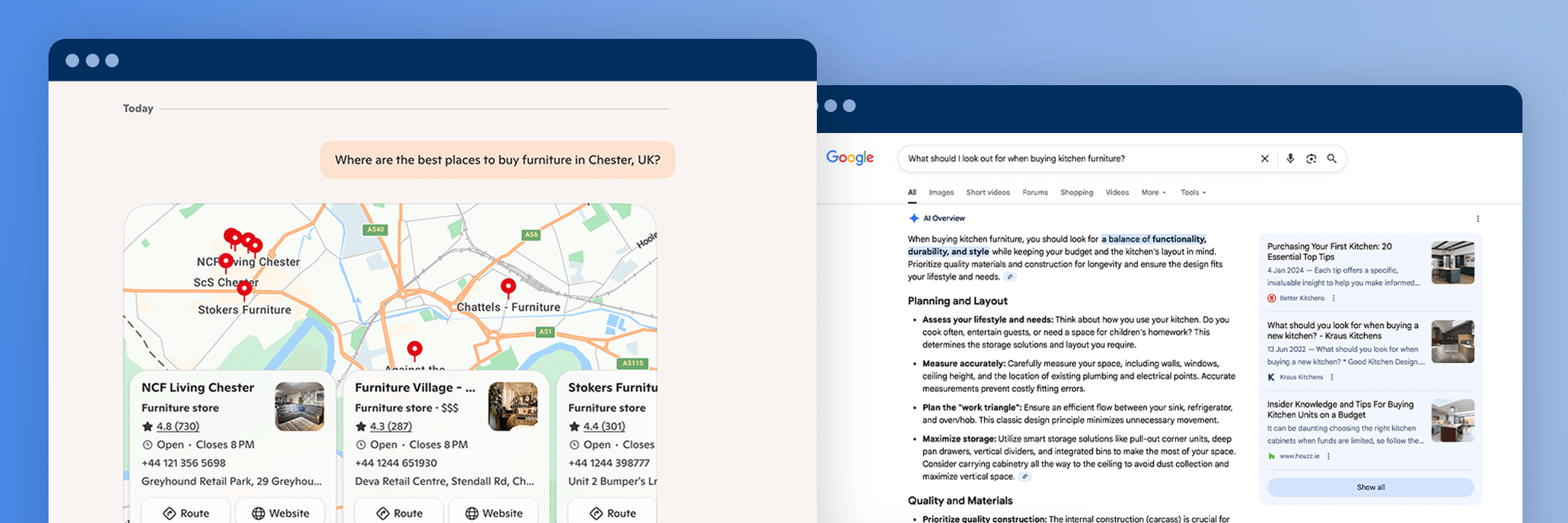
As AI transforms how people search and discover content, understanding how to make your website visible to these new systems is becoming essential for every marketer.

The search landscape has fundamentally changed. AI-powered search experiences like Microsoft Copilot, ChatGPT, and Google’s AI Overviews now handle billions of queries each month and the numbers tell a compelling story: AI referrals to top websites spiked 357% year-over-year in June 2025, reaching 1.13 billion visits.
For content creators and marketers, this shift means visibility is no longer just about ranking position. It’s about being selected. When someone asks an AI assistant a question, your content needs to be structured, clear, and authoritative enough to earn a place in the answer. While traditional SEO fundamentals still matter, crawlability, metadata and backlinks remain essential, success in AI search requires a different approach to how you create and structure content.
AI assistants don’t read your page like a person would. Instead, they parse your content, breaking it into smaller, structured pieces that can be evaluated for relevance and authority. These modular pieces are then assembled into answers, often drawing from multiple sources to create a single, coherent response.
This means your content needs to be easy for AI systems to understand, segment, and extract. If your information is buried in long paragraphs, hidden in expandable menus, or lacks clear structure, it’s less likely to be included in AI-generated answers, regardless of how well-written it is.
Your page title, meta description and H1 tag are critical signals that AI systems use to interpret your content’s purpose. These elements should align closely and use natural language that matches search intent. Your H2 and H3 headings act like chapter titles, defining clear content slices that AI can parse effectively.
Instead of vague headings like “Learn More,” use descriptive ones like “How Does WordPress Caching Improve Site Speed?” This clarity helps AI systems understand exactly what information each section contains.
Direct questions with clear answers mirror how people search and how AI assistants formulate responses. AI systems can often lift these question-answer pairs directly into their responses. This format is particularly effective for FAQs and technical documentation.
Bulleted lists, numbered steps and comparison tables break complex information into clean, reusable segments. They’re especially valuable for how-to content, feature comparisons and product specifications. Rather than describing features in long paragraphs, present them in scannable, structured formats.
Schema markup is structured data code (typically in JSON-LD format) that helps AI systems understand your content with confidence. It can label your content as a product, review, FAQ, article, or event, turning plain text into machine-readable data.
Common schema types include Product, FAQ, HowTo, Article and Review. When implemented correctly, schema markup significantly improves your content’s eligibility for inclusion in AI answers.
Semantic clarity is crucial. AI systems look for clear meaning, consistent context and precise language. Here are key principles:
Keep punctuation simple and consistent. Avoid decorative symbols, excessive em dashes or strings of punctuation that can confuse parsing systems.
Several content patterns actively work against AI search optimisation:
Creating AI-optimised content requires consistent attention to detail, exactly the kind of task where automation can help. Our Filter AI plugin provides practical tools that make it easier for content authors to implement these best practices:
One of the simplest ways to improve AI accessibility is ensuring all images have descriptive alt text. Filter AI can automatically generate contextual alt text for your images, ensuring this crucial element is never overlooked.
Our new FAQ block automatically implements proper schema markup, making your Q&A content immediately recognisable to AI systems. Even better, you can generate FAQs from existing web pages automatically, transforming your content into the structured, question-answer format that AI search prefers.
These tools help your team create AI-optimised content without requiring technical expertise or manual schema implementation.

Filter AI puts you in control with smarter content creation and more flexibility, helping you optimise for search engines while working with the tools you trust.
Generate SEO-ready FAQs in seconds and choose the AI service that works best for each task. Start creating better content today.
AI systems extract concise, “snippable” pieces of content to weave into answers. Make your content eligible by ensuring:
Visibility in AI search isn’t about luck or secret formulas. It’s about making your content easy for AI systems to process, understand and surface. Structure your content with clear headings and schema markup. Write with precision and context. Format information in scannable, modular pieces.
While nothing guarantees selection, these practices give your content the best chance to be chosen when real users ask questions. Traditional SEO still matters, but AI search requires a new layer of optimisation focused on clarity, structure and machine readability.
Need help optimising your website for AI search? Our team at Filter specialises in SEO and paid media strategies that work in today’s AI-powered search landscape. Let’s make sure your content gets found and selected.